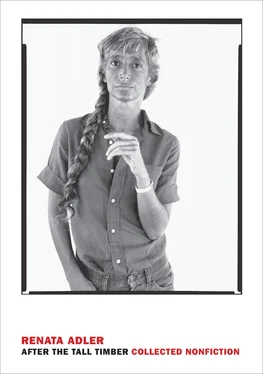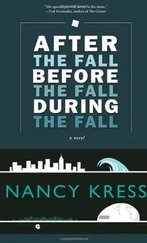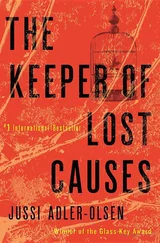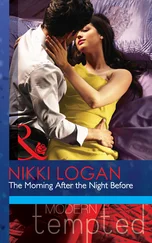“Hey, that’s for the sandals,” Meg said. “You know nobody gets high in Vito’s house.”
The boy put the gluepot down.
Vito, a man in his early fifties, with a sandy mustache and pale-blue eyes, entered the room and said hello to everyone. He was wearing velvet slacks and a pale embroidered cape. Sue, who was pregnant, followed him in. She was wearing a short dress, tights, and a crocheted poncho, and on her fingers she had eight rings. Vito announced that they were both going to take a nap in preparation for the After Hours at the Hullabaloo. Meg suddenly became very tense, and raced out of the room. “What shall I wear?” she shouted several times to Sue from an adjoining room. “Same thing we wear to the freakouts?” When she reappeared, she had drawn fine interlacing green lines around her eyes and across the bridge of her nose. She was wearing a poncho, completely open at the sides, apparently made out of a fluffy white bedspread, and a pair of slacks, which the poncho did not quite reach, made of the same material, bell-bottomed, and cut low at the hips. Vito and Sue retired for their nap, requesting Meg to wake them at 1 A.M.
Meg sat down next to Dot and Marie, and explained that Vito had arranged for them all to dance at the Hullabaloo as performers, because of a complicated licensing regulation. “They’re wiping out the dancing, so everybody’s getting zonked out, right?” she said. “As soon as everybody’s on one thing, they make it illegal. Some of those kids they arrest on the Strip, you know, they call up the parents and say, ‘We’ve got your kid on suspicion of narcotics.’ ‘Suspicion of narcotics.’ They just don’t like the kids and the dancing. They could arrest you on suspicion of being a Martian. They could arrest you for using the wrong deodorant.”
“People don’t think,” Dot said. “It was dead on the Strip without the kids there.”
“They’re going to be locked in their own houses sooner or later without us, and they don’t even know it,” Meg said. “But a whole lot of people are strange. I’m not even sure they’re well — are you ready for that? Everybody should dance, and love, and go about their business, right? But those poor cops, those poor screwed-up cops, they don’t have the words to yell, so they just scream, you know — they just came down the Strip screaming. They’re frightened, right?”
“Nobody had guns,” Marie said, referring to the night of November 12th.
“They didn’t have guns,” Meg said. “They were afraid they’d use them, they were that screwed up.”
“They were afraid if they brought guns, the guns would get broken,” Marie said. “We would have broken them.”
“Man, if you have this hostility, you learn to take it out in loving ways,” Meg said. “If you love somebody, you really groove with them, right? I’m writing things down in a book for myself, because my parents — well, they’re very beautiful for their own thing, but they just don’t know.”
“My parents just can’t stand it,” Marie said. “They can’t stand my bare feet. They can’t stand to see me sleep all day. They say, ‘You ought to find a job. You ought to be self-supporting.’ I say, ‘Why? All I do is sleep here once in a while. Why can’t I have a free life?’ My mother worries about the people I hang out with. I can’t explain — people aren’t what they look like or what they wear….”
“You’re judged by the people you run with, right?” Meg said. “I’m adopted, and my parents really love me. And that’s too bad, because my real mother was probably some unwed mother that I could have grooved with.” She picked up the pussy willow and waved it thoughtfully. “Sometimes I’m so messed up you don’t even know,” she said. “I’m not even sure if I’m really here.”
“I worry about that, too,” Marie said. “Sometimes I think I’m dead and I’m hallucinating the whole thing.”
Three girls, all dressed in dark-blue skirts and jackets, with dark-blue hats, and with lace handkerchiefs in their jacket pockets, came up the staircase, looked around, and silently went down the stairs again.
Meg, whose slacks were splitting slightly at the seams, took them off, went to get a needle and some thread, and sat down to sew.
“Have you ever had the idea you might be in somebody else’s dream?” Dot asked.
“Well, if you’re hallucinating the whole thing, you can change it, right?” Meg said, biting off the thread. “It’s like when you’re having a bad trip — you see what’s real, or what you think is real, and you get upset. You’ve got to say to yourself, ‘You’re on a drug, it’s only a drug.’ Sometimes it takes awhile to change it. But can you imagine how creative your mind must be if you’re dreaming the whole thing?”
The conversation stayed on metaphysics for another hour, during which the girls in the dark suits appeared twice more and the boy with bare feet never uttered a word. At one point, Dot and Meg began to reminisce about how they had become acquainted — in a juvenile home, where Meg had been sent as a “habitual runaway,” and Dot for the vaguer offense of what she described as being “in danger of leading an idle and desolate life.” They spoke of a ghost story the Mexican inmates used to tell — about “La Harona,” a woman who, crazed by syphilis, killed her children.
“They said if you shouted ‘La Harona!’ five times, she would come to you,” Meg said, “and a lot of kids in my unit wanted to test it.”
“I was so terrified I cried all night,” Dot said. “They said she comes through mirrors.” Both girls still seemed terrified at this thought.
“Wouldn’t it be funny if you could look at yourself without looking in a mirror?” Meg said. Then she began talking about a boy friend who had first brought her to Vito’s. “I was completely freaked out at the time,” she said. “Pete just brought me here, and I grooved on the place. He used to wear two belts and wild flowers. Now he plays in a jazz group and wears a suit, but I still love him. The chick he married loves me, too, but I think two’s company.”
One of the three girls in blue suits now appeared at the top of the stairs again, wearing gold-rimmed glasses and carrying a piece of the red clay. She began to dance by herself.
Dot and Meg spoke of their last day at the juvenile home. They had sculpted a large eye together in an art class, and they had asked for permission to take it with them when they left.
“But the teacher at juvey said, ‘You have to finish it,”’ Meg said. “And, of course, we told her it was finished. But she said, ‘No, that isn’t finished, you have to paint it.”’ “So we didn’t get to take it,” Dot said.
By this time, Vito and Sue were getting up from their nap, and a crowd gradually assembled at the top of the stairs. A fourth girl in dark blue now joined the three others. An Oriental boy in a paisley shirt and suede pants appeared, and then a girl in a scarlet pants suit, and one in a purple pants suit (both wore matching derbies and ties), and a man in what looked like a matador outfit, a man with chaps and a ten-gallon hat, a girl in a piece of silk bordered and tufted with fur, a girl in a fringed deerslayer jacket and orange bell-bottom trousers, a bearded man in a kind of bishop’s mantle, and several others in puff hats or floppy hats or with red bows tied all over their hair. The entire group departed in four carloads for Sunset Boulevard, to dance onstage in the After Hours at the Hullabaloo.
At 2 A.M. on Saturday, January 14th, the Hullabaloo, which holds about two thousand people, and which lies directly across the boulevard from the Hollywood Palladium (where, earlier that evening, Lawrence Welk had played for the National Smooth Dancer’s Association Ball), was so full that the longhairs waiting outside occupied the entire block, not in any sort of line but extending radially over the area. A parking lot beside the Hullabaloo was full of cars, nearly all with their radios on, so a kind of concert of Donovan, the Beach Boys, Sonny and Cher, and Buffalo Springfield (“Fly trans-love airways / Getcha there on time…. Gotta keep those a’lovin’ vibrations a’happenin’ with her…. The beat goes on…. Paranoia strikes deep / Into your life it will creep”) was rising from the asphalt. Vito led his group in among the cars and around to the back of the building, where, after being questioned only briefly at the entrance, he smuggled them as “performers” up a ramp, and onto the back of the stage. Since the hours before morning had been Friday the thirteenth, thirteen groups were scheduled to play: the Sound Machine, the Mandala, the Peanut Butter Conspiracy, the Smokestack Lightning, the Factory, the Electric Prune, the Yellow Payges, the Sons of Adam, the Coloring Book, the Wild Ones, Iron Butterfly, the Seeds, and Love. The stage floor was a rotating platform divided in two by a backdrop curtain, so that while one group was playing the next could be warming up. (This arrangement created a sound backstage not unlike the one intentionally produced by some of the groups in the course of their normal engagements. Love, for example, often plays with someone else’s record of another song as background music.) The area backstage was full of people in costumes of one sort or another — denims, satins, burlaps, suedes, and one tutu. A lonely troubadour wearing knickers and a ruffled shirt walked around throughout the performances strumming a guitar. No one seemed to know him, and he was not a member of any group.
Читать дальше






![Джеффри Арчер - The Short, the Long and the Tall [С иллюстрациями]](/books/388600/dzheffri-archer-the-short-the-long-and-the-tall-s-thumb.webp)





